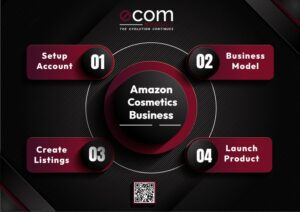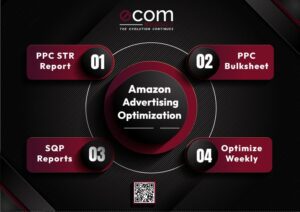
Have a great time reading this blog.
Ready to see how our team can grow your Amazon brand? Click Here
.box {
position: relative;
padding: 15px;
font-size: 16px;
color: #62668A;
background-color: rgba(255, 100, 100, 0.05);
}
.box::before {
content: "";
position: absolute;
top: 0;
left: 0;
width: 100%;
height: 100%;
background-color: rgba(100, 15, 37, 0.05);
z-index: -1;
}
.text {
font-size: inherit;
}
.first-sentence {
font-size: 16px;
font-weight: bold;
}
.second-sentence {
font-size: 14px;
}
.text .link {
text-decoration: none;
color: #640F25;
font-size: 14px;
font-weight: 500;
}
/* Responsive font size for mobile devices */
@media (max-width: 767px) {
.box {
font-size: 15px; /* Reduce font size by 1 point for mobile */
}
.first-sentence {
font-size: 15px;
}
.second-sentence {
font-size: 13px;
}
.text .link {
font-size: 13px;
}
}
Have a great time reading this blog.
Ready to see how our team can grow your Amazon brand? Click Here
Selling Clothes on Amazon (2024): Step-by-Step Guide for Sellers
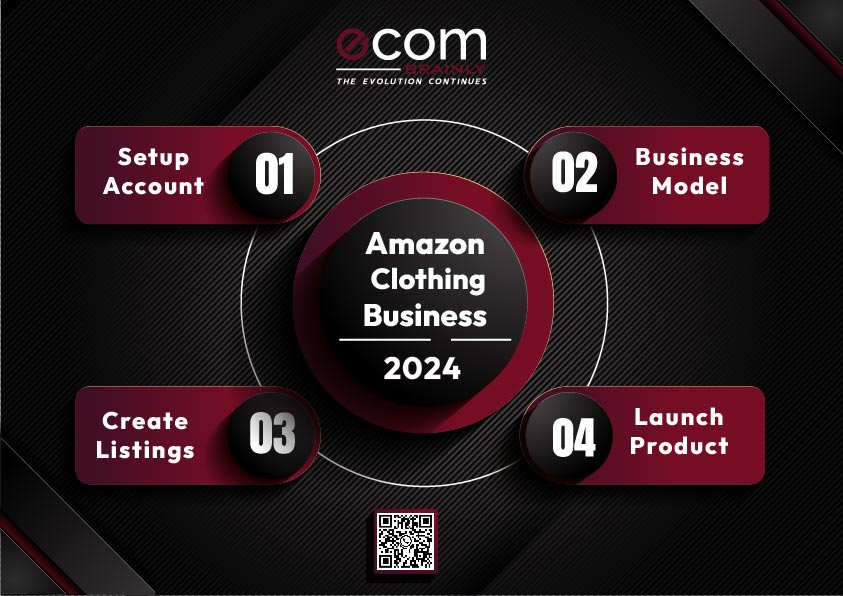
Amazon Apparel Market
Selling clothes on Amazon stands out as a highly lucrative endeavor. Amazon, a dominant force in the online retail landscape, offers an expansive platform where both renowned brands and individual sellers thrive.
The appeal of selling apparel on Amazon is rooted in the platform’s vast customer base and its position as a top apparel seller in the United States.
I. Why Choose Amazon for Selling Clothes?
The decision to start selling clothes on Amazon is backed by compelling reasons. Amazon’s apparel market is not just about the sheer volume of sales; it’s about tapping into a market where a significant portion of U.S. shoppers, nearly 40%, are already purchasing their clothing. This existing customer base provides a ready market for new sellers.
II. Viability of Selling Apparel on Amazon
The financial aspect of how to sell clothes on Amazon is a key consideration. In 2020 alone, Amazon reported a staggering $41 billion in clothing sales, a figure that’s projected to continue rising.
This growth trajectory suggests that selling boutique clothing on Amazon can be a profitable venture, with many sellers enjoying substantial earnings.
The profitability hinges on various factors, including the types of clothes sold, the chosen business strategy, and the ability to tap into market demand.
III. Competitive Landscape
While the opportunity is immense, the competition in selling clothes on Amazon is equally intense. Success in this arena requires more than just listing a few items; it demands a deep understanding of market trends, consumer preferences, and strategic positioning.
Whether you’re aiming for a full-time business or a side hustle, how to sell apparel on Amazon involves navigating through a competitive landscape to carve out your niche.
Step - 1: Setting Up Your Amazon Seller Account
The first step in selling clothes on Amazon involves setting up your Amazon Seller account. This process is straightforward but crucial in laying the foundation for your online clothing business.
I. Choosing the Right Selling Plan
Amazon offers two primary selling plans: Individual and Professional. The Individual plan is typically suited for sellers who anticipate selling fewer than 40 items per month. It involves a per-item selling fee, making it a cost-effective choice for those just starting out or testing the waters in selling apparel on Amazon.
On the other hand, the Professional plan is designed for more voluminous sales, exceeding 40 items per month. This plan comes with a monthly subscription fee but offers additional benefits like eligibility for the Buy Box, advanced selling tools, and the ability to run promotions. For those serious about selling boutique clothing on Amazon, the Professional plan often proves to be the more strategic choice.
II. Registration Process
To register as a seller, you’ll need to provide essential information such as your phone number, a valid credit card, bank account details, and tax information. U.S. taxpayers will fill out the W-9 form, while non-U.S. taxpayers will complete the W-8BEN form. This step is vital in ensuring compliance and smooth financial transactions.
III. Amazon's Fee Structure
It’s important to be aware of the various fees associated with selling clothes on Amazon. These include the referral fees, which vary by category, and additional fees if you opt for Amazon’s Fulfillment by Amazon (FBA) service.
Understanding these fees upfront will help you price your products competitively and manage your profit margins effectively.
Below is the Amazon Fee structure for the clothing category. Amazon charges per unit fee after a unit is purchased by customers and automatically deducts their fee.
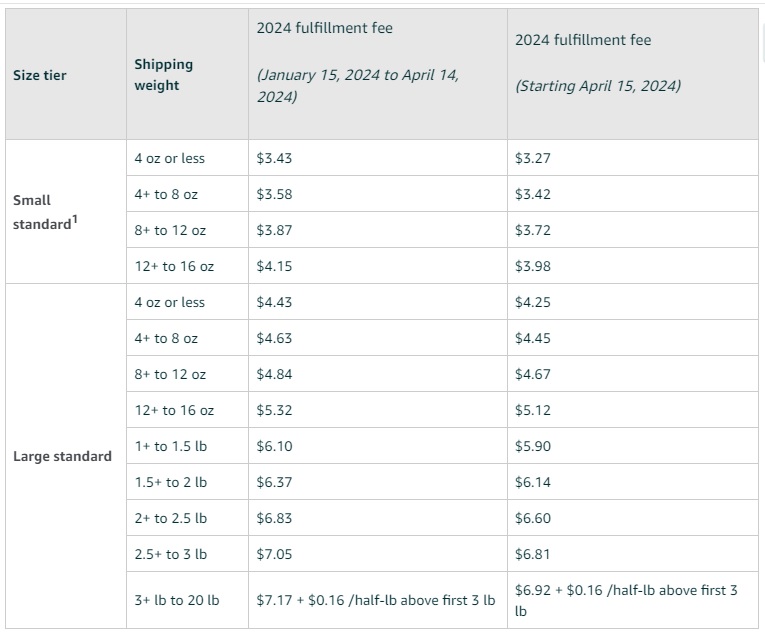
Step - 2: Choosing Your Fulfillment Method
When you embark on the journey of selling clothes on Amazon, one of the most crucial decisions involves selecting a fulfillment method.
Amazon offers two primary options: Fulfillment by Amazon (FBA) and Fulfillment by Merchant (FBM), each with its unique advantages and considerations.
I. Fulfillment by Amazon (FBA)
Opting for FBA means Amazon takes care of the storage, packaging, shipping, and customer service for your clothing items.
This option is ideal for sellers who prefer to focus more on sourcing and marketing their products rather than logistics. FBA also makes your products eligible for Amazon Prime, which can significantly boost your sales potential.
However, it’s important to factor in the additional costs for these services, which can impact your profit margins.
II. Fulfillment by Merchant (FBM)
FBM gives you more control over the shipping and customer service aspects of your business. This option is often preferred by sellers who have the capacity to handle logistics and want to maintain higher profit margins.
With FBM, you can personalize the customer experience, such as including branded packaging or thank-you notes, which can be a significant advantage in selling boutique clothing on Amazon.
III. Making the Right Choice
Your decision between FBA and FBM should align with your business model, resources, and long-term goals in selling apparel on Amazon.
FBA offers convenience and the backing of Amazon’s trusted customer service, while FBM provides more control and potentially higher margins.
Step - 3: Selecting a Business Model
When you decide to start selling clothes on Amazon, choosing the right business model is crucial. Your business model not only defines your approach to sourcing and selling products but also shapes your brand identity and growth strategy.
Here are the most common models used by Amazon clothing sellers:
I. Amazon Private Label
The Private Label model involves creating and selling your own brand of clothing. This approach is ideal for sellers who want to build and promote their own brand identity.
It requires a significant initial investment and effort in brand development but offers higher profit margins and brand control. Private Label is particularly popular among sellers interested in selling clothes on Amazon.
II. Amazon Wholesale
Wholesale involves purchasing clothes in bulk from brands or distributors and reselling them on Amazon. This model requires approval from Amazon for each brand you sell and is subject to Amazon’s policies to prevent counterfeit sales.
Wholesale can be a viable option for those who have established relationships with suppliers and can negotiate favorable purchase terms.
III. Retail Arbitrage
Retail Arbitrage involves buying clothing from retail stores (often at a discount) and reselling them on Amazon at a higher price.
This model requires less upfront investment compared to Wholesale or Private Label but can be more time-consuming and less scalable.
IV. Amazon Handmade Seller
For designers or artists, the Handmade model allows you to sell unique, artisan-crafted clothing. This model is ideal for those who create their own products and wish to target a niche market.
Amazon Handmade offers a platform for artisans to reach a wider audience, though it comes with its own set of guidelines and fees.
V. Dropshipping
Dropshipping is a model where you list products on Amazon but don’t hold inventory. Instead, orders are fulfilled directly by the supplier or manufacturer. This model has lower upfront costs but offers less control over shipping and product quality.
VI. Choosing the Right Model
Your choice among these models should be based on your capital, experience, and long-term business goals. Whether you aim to create a unique brand or capitalize on existing market trends, your business model will play a key role in your success in selling apparel on Amazon.
Step - 4: Creating and Optimizing Product Listings
Once you’ve established your business model for selling clothes on Amazon, the next crucial step is creating and optimizing your product listings. This stage is where your products get the visibility and appeal they need to attract and convert customers.
I. High-Quality Images and Descriptions
The cornerstone of a successful listing is high-quality imagery. Clear, well-lit photos that showcase your clothing items from multiple angles are essential.
For selling boutique clothing on Amazon, consider professional photography to highlight the unique aspects of your products.
Alongside images, write detailed and engaging product descriptions that provide customers with all the necessary information, including material, size, care instructions, and styling tips.
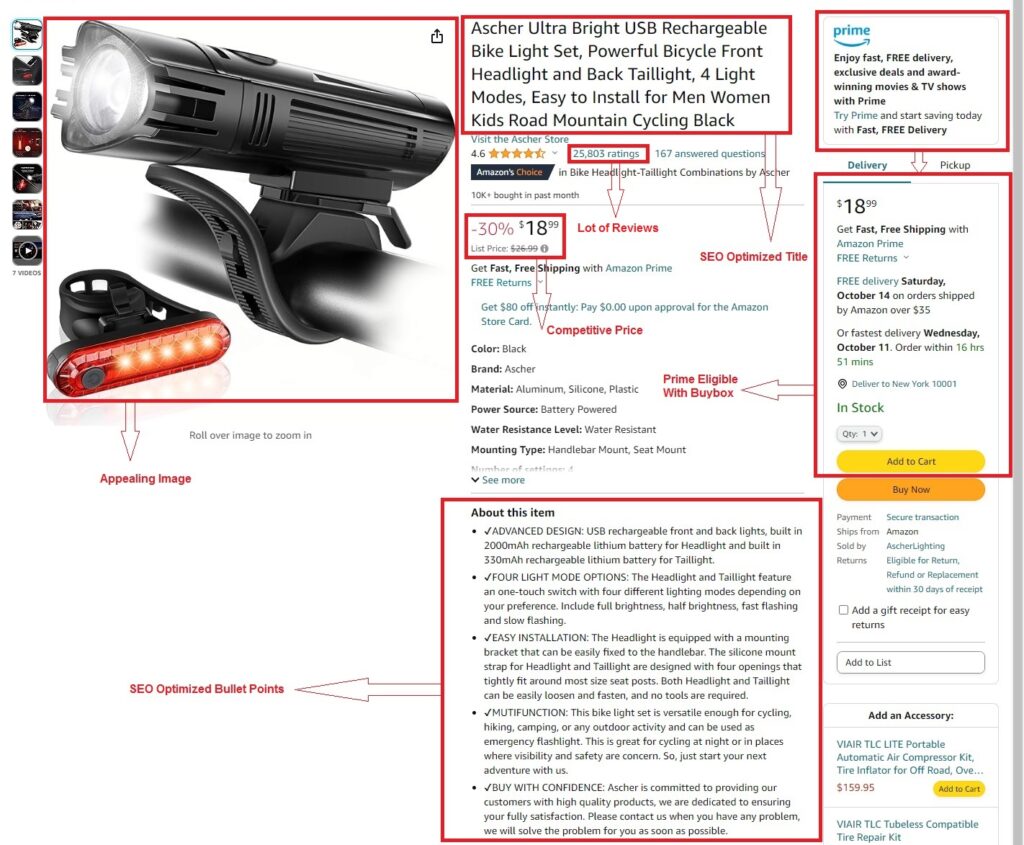
II. Keywords and Amazon SEO
Incorporating relevant, high-volume keywords into your titles, descriptions, and bullet points is vital for search engine optimization on Amazon.
Keywords like “fashionable men’s jackets” or “elegant summer dresses” can help your products appear in relevant searches, increasing visibility. Tools like Helium10 can aid in identifying effective keywords for your listings.
III. Create Amazon Store
An Amazon Store allows you to create a branded online storefront. This is a powerful tool for selling apparel on Amazon, as it lets you showcase your entire clothing line in one place. You can design your store with custom images, text, and layouts that reflect your brand’s style and story.
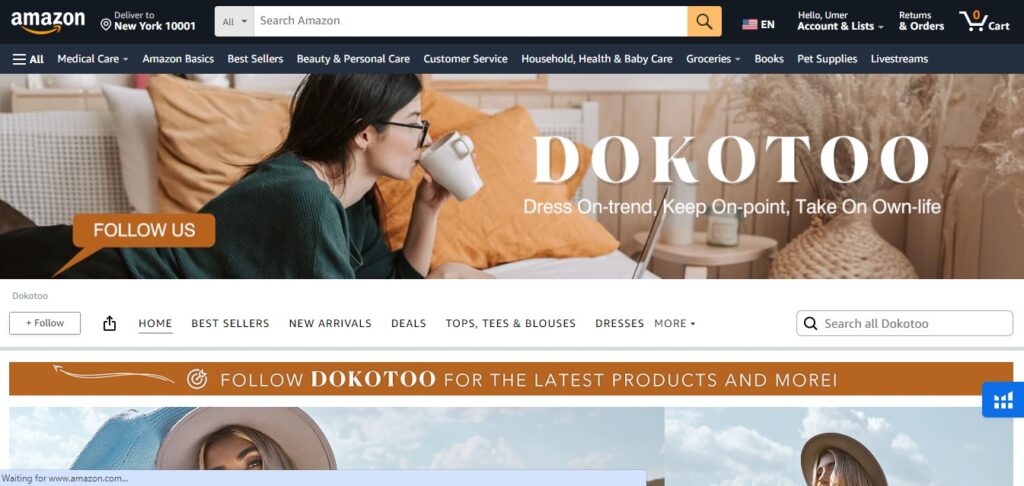
IV. Amazon A+ Content
Utilize Amazon A+ Content to enhance your product descriptions with rich text and images. This feature is available to professional sellers and can significantly improve customer engagement and conversion rates.
A+ Content allows you to tell a more compelling product story, highlight key features, and differentiate your brand from competitors.

V. Amazon Brand Story
Your brand story is a crucial element of your Amazon listings. It’s not just about the products you sell but the story behind your brand.
Share your brand’s mission, the inspiration behind your designs, and what sets your clothing apart. A compelling brand story can create an emotional connection with customers and foster brand loyalty.

VI. Product Variations and Categories
Offering variations such as different sizes and colors can cater to a wider audience. Proper categorization of your products also aids in directing targeted traffic to your listings.

Step - 5: Amazon Luxury - A Gateway for High-End Fashion
For sellers specializing in high-end fashion, Amazon Luxury Stores presents a unique and prestigious platform. This exclusive segment of Amazon caters specifically to luxury fashion and beauty brands, offering a distinct shopping experience that aligns with the expectations of luxury shoppers.
I. Exclusive Audience Reach
Amazon Luxury Stores targets a specific segment of customers who are looking for premium, high-end fashion products. By listing your products here, you gain access to an audience that values quality and is willing to invest in luxury items.
II. Enhanced Brand Visibility
Selling on Amazon Luxury Stores elevates your brand’s visibility. It places your products alongside other esteemed luxury fashion brands, enhancing your brand’s prestige and recognition.
III. Tailored Shopping Experience
Amazon Luxury Stores offers a shopping experience that’s tailored to luxury buyers. This includes high-quality product imagery, detailed descriptions, and a layout that reflects the sophistication and exclusivity of luxury shopping.
IV. Fast and Reliable Delivery
Amazon’s promise of fast and free delivery extends to Amazon Luxury Stores. This service adds to the premium experience for customers, ensuring that they receive their high-end purchases promptly and securely.
V. How to Sell on Amazon Luxury Stores
To start selling on Amazon Luxury Stores, brands need to meet certain criteria set by Amazon for luxury and designer products. This includes having an established presence in the luxury fashion market and offering products that align with the high standards of Amazon Luxury Stores.
Step - 6: Marketing and Promotion Strategies
After setting up your product listings, the next crucial step in selling clothes on Amazon is developing effective marketing and promotion strategies. These strategies are key to increasing the visibility of your products and driving sales.
I. Amazon PPC Advertising
Utilize Amazon’s advertising platform to promote your products. Options like Sponsored Products, Sponsored Brands, and Sponsored Displays can significantly increase your product visibility.
These tools allow you to target specific keywords and customer segments, making your ads more effective.
II. External Marketing Channels
Selling on Amazon Luxury Stores elevates your brand’s visibility. It places your products alongside other esteemed luxury fashion brands, enhancing your brand’s prestige and recognition.
III. Influencer Partnerships
Collaborate with influencers in the fashion industry to promote your products. Influencers can provide authentic endorsements and reach a large audience through their social media platforms, blogs, or YouTube channels.
IV. Customer Engagement and Reviews
Encourage customers to leave reviews and ratings for your products. Positive reviews can significantly boost your product’s credibility and ranking on Amazon. Engage with customers by responding to their reviews and addressing any concerns promptly.
V. Lightning Deals and Promotions
Participate in Amazon’s Lightning Deals or create your own promotions such as discounts and coupons. These deals can attract price-sensitive customers and increase the visibility of your products during the promotion period.
VI. Email Marketing
If you have a customer email list, use email marketing to promote your Amazon products. Send newsletters, product announcements, and special offers to keep your customers engaged and informed about your latest offerings on Amazon.
Step - 7: Scaling Your Amazon Apparel Business
After establishing a solid foundation in selling clothes on Amazon, the next phase is scaling your business. Growth and expansion require strategic planning and execution, ensuring that your brand not only reaches a wider audience but also sustains its market presence effectively.
I. Expanding Product Lines
Consider expanding your product line to include a broader range of clothing items. This could involve introducing new styles, sizes, or even venturing into related categories like accessories.
Expansion should be based on market research, customer feedback, and sales data to ensure that you are meeting the demands of your target audience.
II. Exploring New Markets
Look beyond your current marketplace and explore opportunities in other Amazon regions. Selling in multiple Amazon marketplaces can significantly increase your brand’s reach and revenue.
However, this requires understanding the specific demands and compliance requirements of each market.
III. Optimizing for Seasonal Trends
Stay attuned to seasonal trends and adjust your inventory and marketing strategies accordingly. This could involve stocking up on specific items for holiday seasons or launching special promotions during peak shopping periods.
IV. Building a Strong Brand Presence
Focus on building a strong brand presence both within and outside Amazon. This includes maintaining a consistent brand image, engaging with customers through social media, and potentially developing an independent e-commerce website.
A strong brand presence can lead to increased customer loyalty and higher perceived value of your products.
V. Continuous Improvement
Stay committed to continuous improvement and innovation. Keep an eye on emerging fashion trends, customer preferences, and new Amazon features or tools that can enhance your selling experience. Being adaptable and innovative is key to staying competitive and successful in the long term.
Amazon Success with Ecom Brainly
Ready to take your Amazon clothing business to new heights? Join forces with Ecom Brainly, where expertise meets innovation in the world of e-commerce.
Whether you’re navigating Amazon luxury fashion or scaling up your boutique clothing line, our team at Ecom Brainly is here to guide you every step of the way.
Don’t let the complexities of selling clothes on Amazon hold you back. Contact Ecom Brainly today and unlock the full potential of your Amazon apparel business. Together, we’ll transform challenges into opportunities and aspirations into achievements.
Share This Article

About Ecom Brainly
Ecom Brainly – A Full-Service Amazon agency that focuses on Sustainable Growth and Profitability for Our Partners (clients).
We been selling on Amazon since 2017 and has had to adapt for every change that Amazon has made along the way. Amazon is an ever changing marketplace and Ecom Brainly has his team ready to handle any and every challenge.
Is your brand having challenges with growth, profitability, advertising, reporting etc – If yes, please contact us today!



